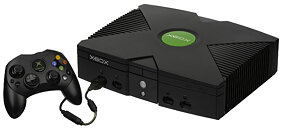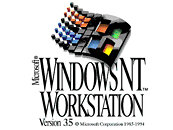Friday, May 22nd 2020
Original Xbox & Windows NT 3.5 Source Code Leaks Online
According to The Verge, source code for the original Xbox and Windows NT 3.5 has leaked online. The leak reportedly contains the kernel for the original Xbox OS, build environments, testing emulators, and internal development documents. This leak may help further emulation efforts for the original Xbox which as of now can only play ~40 of the over 900 games released for the console. This isn't the first time Microsoft has suffered a source code leak, with partial Windows 2000 and NT 4 source code leaking back in 2004 but given the age of the software this is unlikely to be of much significance. A Microsoft spokesperson told The Verge that "We're aware of these reports and are investigating".
Source:
The Verge


21 Comments on Original Xbox & Windows NT 3.5 Source Code Leaks Online
Microsoft leaks source code for Windows NT 3.5 and Xbox..in order to force outdated servers to upgrade and update to current hardware and Windows 10 Server
as for Xbox users to upgrade to newest Xbox or wait till Winter for latest Xbox gen..
arstechnica.com/information-technology/2015/11/failed-windows-3-1-system-blamed-for-taking-out-paris-airport/
It's old news, but not that old.
And Windows NT 3.5 is just around 2 and a half years younger than Windows 3.1...
The problem is figuring out how everything works without documentation. This leak could help with that.
in the remote case this was their doing they would have done it in 2001 when they EOLed NT 3.5, not nearly 20 years later when its market share should be less than 1%
they would have leaked windows server 2003 or even 2008
arstechnica.com/information-technology/2010/01/microsoft-investigates-17-year-old-windows-flaw/
A vulnerability that could be exploited all the way from Windows NT 3.1 up to Windows 7. It would be a security nightmare if things like this popped up all the time, because of a source code leak.
That aside, if Microsoft actually wanted to release it, they would have to ensure they are not breaching contracts before releasing it. Windows NT probably shares a lot of code with IBM's OS/2, so it probably will never be legally released to the public...
Mind you NT4 is VERY different from.NT 3.5. The kernel between them underwent a nearly complete rewrite, as NT 3.5 had a lot of shared code with OS/2 from when IBM was working on that with Microsoft jointly. Heck, NT 3.5 even uses the HPFS filesystem instead of NTFS.IBM actually wanted to open source OS/2 nearly 10 years ago but is bound by patented common code in the NT 3.5 codebase... AKA this.
A Xbox emulator could run on a 2015 Android device, 5.0, maybe quad core and 2gb of ram. The Dreamcast emulator for android run on those specs.
It's quite curious how pc port parity will determine the future interest in the retro community. PS3 emulation has advanced leaps and bounds in the last 2 or 3 years to the point of almost 40% of the game catalogue being fully playable on a console notorious for being a programming hell while X360 emulation is still in technical demos and alphas.